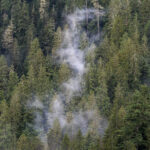Protecting sources 101
Backgrounder
A Canadian court is unlikely to recognize a journalist’s right to protect the identity of a confidential source. So how should journalists deal with sources who ask for anonymity?
No blanket protection for sources
Canada’s courts do not give journalists an absolute right to promise confidentiality to a source. Nor does Canada have the shield laws that many U.S. states offer to protect the media’s sources. Judges, commissioners of public inquiries, and Parliament and provincial legislatures have the power to hold a journalist in contempt for refusing to divulge information, including the name of a source. But judges have been hesitant to wield this power against journalists who have promised confidentiality to a source. The identity must be relevant to the case before the court, and judges decide on a case-by-case basis whether it is more important to honour a promise of confidentiality than to demand that the source be identified.
A limited privilege for journalists
The Supreme Court of Canada noted back in 1989 that a journalist should be able to claim privilege to protect a source (Moysa v. Labour Relations Board et al. (1989), 60 D.L.R. (4th) 1). The right case finally came along in January 2004, when Justice Mary Lou Benotto of the Ontario Superior Court found that National Post reporter Andrew McIntosh could invoke privilege to protect the name of a source consulted during his investigation of federal loans and grants in the Quebec riding of former prime minister Jean Chrétien (R. v. National Post, 2004 CanLII 8048). Benotto’s ruling (which is under appeal) does not create a blanket protection for journalists’ sources, however, and judges in other provinces are not obliged to follow her lead. But her reasoning is persuasive and recognizes the media’s Charter right to freedom of expression.
Police were trying to seize a document leaked to McIntosh so forensic tests could be conducted to identify the sender. Benotto characterized it as a fishing expedition with little chance of success. In December 2004 another Ontario Superior Court judge was facing the same issue but in a different context. Justice David Crane found Hamilton Spectator reporter Ken Peters in contempt for refusing to identify a source. This was no fishing expedition – Peters was a key witness in a major lawsuit between a nursing home and the City of Hamilton. The judge ruled Peters’ sources were crucial to the case and, when the reporter refused to comply, the paper was ordered to pay $31,600 in legal costs (St. Elizabeth Home Society v Hamilton et al.).
The National Post and the Hamilton Spectator decisions are under appeal and future rulings should clarify how far journalists can go to protect their sources.
The “newspaper rule”
Different rules apply in defamation cases if the person suing demands to know the name of a journalist’s source. Courts in Ontario and some other provinces have developed the “newspaper rule,” which allows journalists to protect the names of confidential sources during the early phases of a defamation case. But if the case goes to trial, the sources must be identified. The Alberta courts adopted the newspaper rule in 2005, enabling the CBC to protect its sources in the pre-trial phase of a libel suit filed by Edmonton’s former chief of police (Wasylyshen v. Canadian Broadcasting Corporation, 2005 ABQB 902). This is not the case in British Columbia. In 2002 a judge ordered a Vancouver Sun reporter being sued for libel to identify a nurse who accused a doctor of incompetence (Bouaziz v. Ouston et al., 2002 BCSC 1297).
Dealing with unnamed sources
When a source demands anonymity in exchange for information, journalists should be careful what they promise. It’s unlikely the promise will become the subject of a legal action, but if it does a journalist faces the dilemma of breaking the promise or being fined or jailed for contempt. Level with the source and explain that an iron-clad promise is impossible. Give yourself an exit strategy by agreeing to protect the source’s identity unless you are faced with a court order. For tips on dealing with unnamed sources, consult the Canadian Association of Journalists’ ethical guidelines for investigative reporting.
— Compiled by Dean Jobb. Updated December 2006.
[node:ad]



